Knots and lashings
Knots
Square knot
The square knot is used to bind two ends of a rope together. It can be used to extend a rope.
- Move right end of rope over and under the rope. It is now the left end.
- Move the left end over and under the right end
- Tighten by pulling on both ends
Make sure the knot is right over left, left over right or vice versa. Right over right and then right over right again will significantly reduce the strength of the knot.

Two half hitches
Used to secure a rope to a pole.
- Wrap rope around pole with shorter side closer to you
- Move shorter side over longer side
- Move shorter side under the loop you have created
- Move that end over itself and repeat
- Tighten
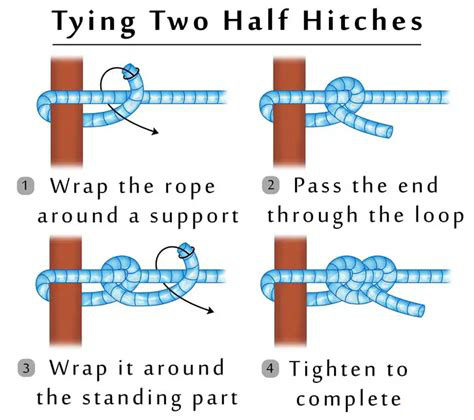
Timber hitch
As the name implies it can be used to secure timber. It can also be used as part of a diagonal lashing.
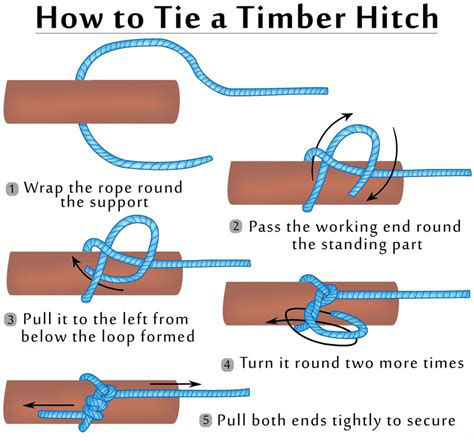
Taut line hitch
Used to secure a rope to a vertical thing like a tent stake. Is adjustable.
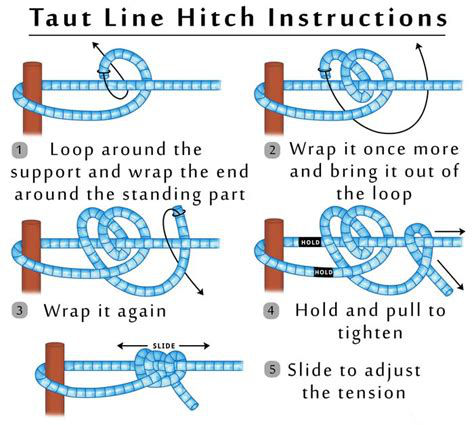
Clove hitch
Clove hitch secure a rope to a pole or something. It is used in many lashings.
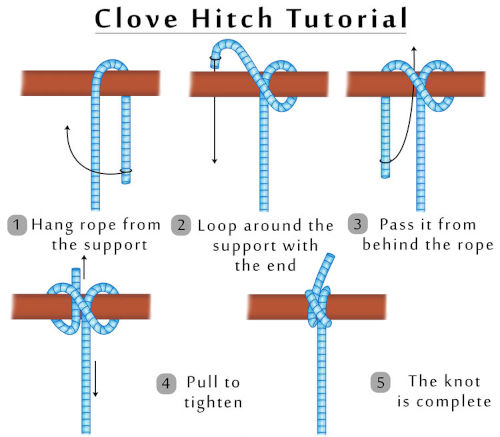
Sheet bend
Used to bind two ends together, even if they have different thickness.
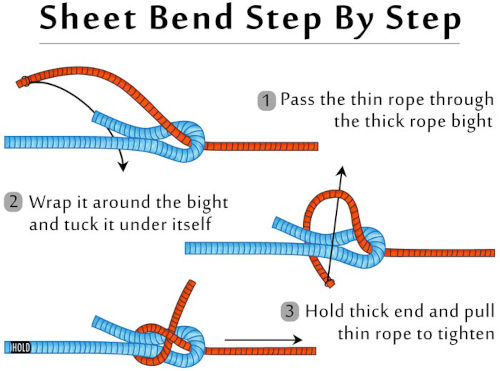
Lashings
Lashings are basically a combination of poles, knots, and rope. They can be used to create structures with only those materials.
Square lashing
Two sticks perpendicular to each other. Should be able to withstand a weight placed on one of the sticks and attempts to change angle.
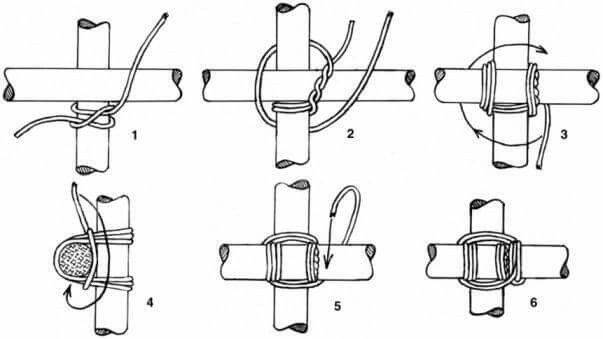
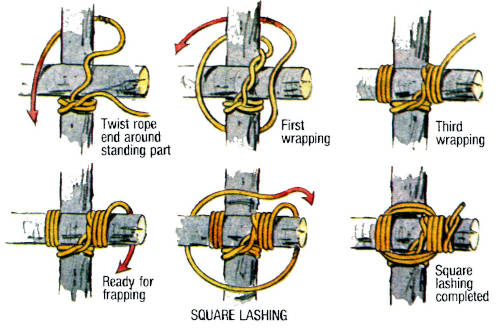
Round lashing
Used to extend a stick. Tie two of these at the ends of the intersection point of the two sticks. Should be difficult to pull the sticks apart.
Diagonal lashing
Diagonal lashings care used to close a gap between two poles that cross but don't touch.
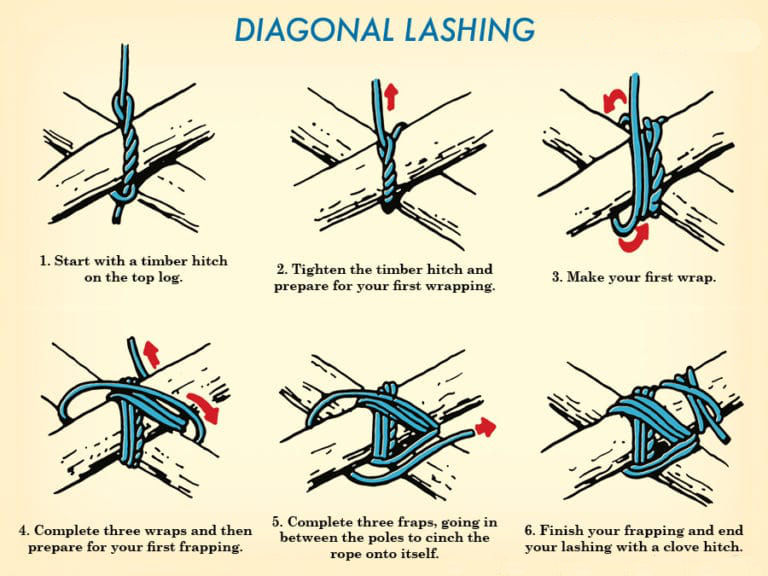
Shear lashing
Shear lashings attach two ropes together and allow them to move.
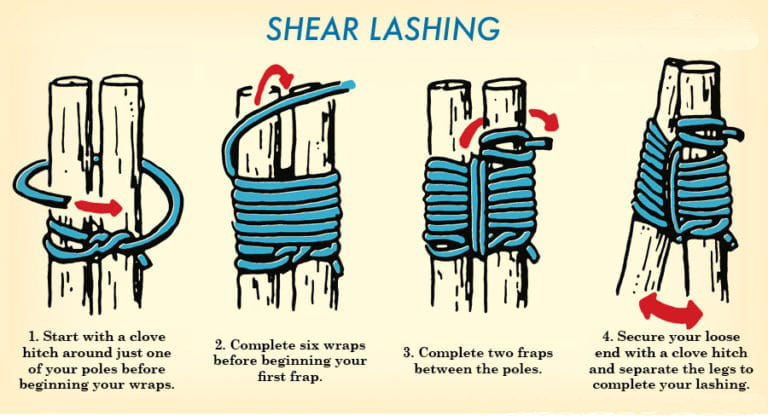
Floor lashing
Given an absurd amount of sticks and ludicrous lengths of rope, a floor lashing is a flat surface that can be used for things like floors.
Terminology
Running end: the end of the rope that is used to tie a knot.
Standing part: the part of the rope that isn't the running end
Overhand loop: A loop in which the running end of the rope is on top of the standing part
Underhand loop: A loop with the running end of the rope under the standing part
Bight: A U shaped formation created by doubling back a length of rope alongside itself. The running end of the rope does not cross the standing part.
Eye: The space enclosed by a loop or bight
Turn: To make a turn, wrap the rope once around a pole or stake.
Roundturn: Make a roundturn by wrapping the rope once around a spar or stake and then halfway around again so that the running end of the rope is going back toward the standing part.
Hitch: A knot that secures a rope to a pole or other stationary object.
Bend: A knot used to join two ropes.
Dress a knot: To adjust a knot so that everything is in its place, which usually means pulling on all the strands evenly.
Views: 171
Replies coming soon